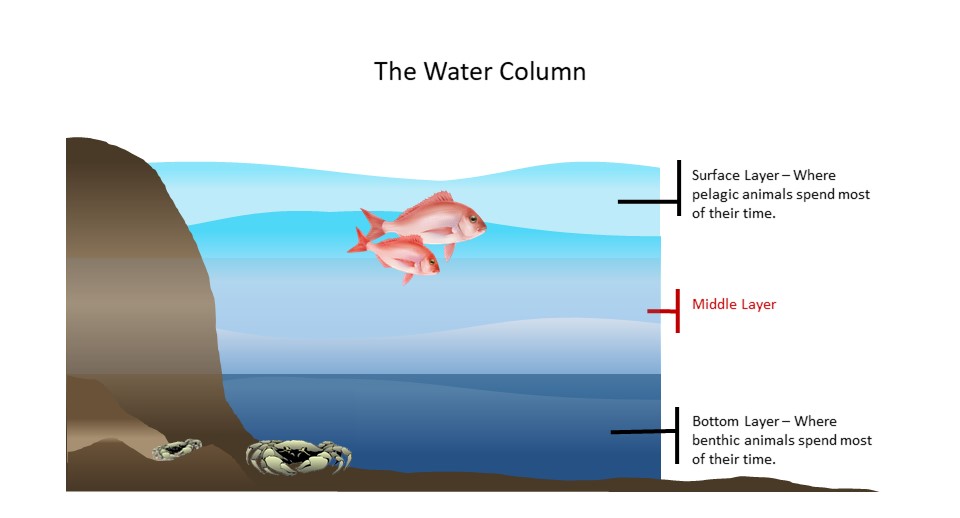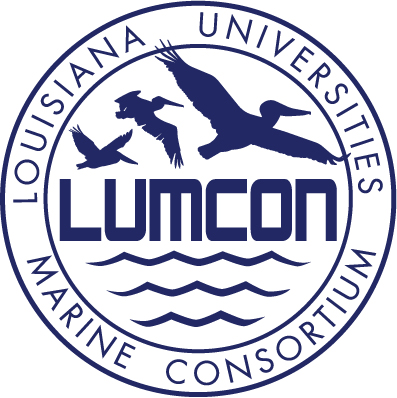A bay is a part of the land on a coast that curves inward creating a body of water that is somewhat surrounded by land. On a map they look like large semi-circular body of water with a very wide opening to a lake as shown in the graphic below. Unlike gulfs which are bigger and deeper, bays are generally smaller, shallow, less enclosed by land . Thinking about the differences between a bay and a gulf can sometimes make our brains hurt. The best way to think about the differences is to remember a bay is really part of the coast that is flooded. While a gulf is actually part of the ocean that happens to be surrounded by land.

For this section, we are going to focus on Terrebonne Bay since is where a lot of the research operations for LUMCON happen.
Terrebonne Bay is located on the coast of Louisiana between the Mississippi and Atchafalaya rivers south of the city of Houma in Terrebonne Parish. It is bordered by the mainland and barrier islands. The bay is dotted with man-made structures called wellheads that are part of the oil and gas industry. Because of its location, Terrebonne Bay acts as a sort of gateway to the Gulf of Mexico for people and animals as they move to the sea south through the estuary. In this lesson, we are going to focus on Terrebonne Bay since it is within the operational area for research and education at the Marine Center.
Physical Environment of Terrebonne Bay
Terrebonne Bay is a shallow, muddy bay that has some protection from the south by the barrier islands. The water in this bay is brackish which means that it’s saltier than fresh water but not as salty as the ocean. In brackish environments, the water is stratified, meaning it has two layers. There is the freshwater that comes down the rivers and the heavier salt water that comes up from the Gulf. These two layers mix in an area called the pycnocline and create a salty, nutrient-rich environment. This water mixing is a key characteristic of bays. The circulation of water affects the availability of essential resources like oxygen and nutrients in the environment. Weather factors like wind, heavy rainfall, and lack of rainfall can all affect this mixing.
Introduction to the Water Column
Before we jump into the biology of the bay, we need to talk about the water column. The water column extends from the surface of the water to the bottom of a body of water. We can think about the water column in sections or layers, at the top we have the surface water, under that we have middle water, and below that the bottom water. All these layers have different characteristics (temperature, salinity, pH, etc…). Each layer of water has certain species of organisms that are specialized to live in that layer. Of course, many species can travel from one layer to another, but most organisms will spend most of their time in one layer. At the top of the water column, you’ll find fish like anchovies and jacks who find their food close to the surface. We call fish that spend most of their time in the top layer, or open sea, pelagic. Closer to the bottom you’ll find fish like flatfishes and drums that find their food on or near the benthos (seafloor). We call these species demersal. And then way deep at the bottom, you’ll find benthic organisms like tube worms or sea stars that live their lives buried in or attached to the benthos.

Biological Environment of Terrebonne Bay
Now that we understand the water column and where organisms live, let’s talk about what’s in Terrebonne Bay. The bay is home to many species that are uniquely adapted to its brackish water. Some travel between the bay and the Gulf. Some grow up in the bay and eventually move to the Gulf. Others live their whole lives in the shallow muddy waters of Terrebonne Bay. Many organisms use Terrebonne Bay as a nursery habitat (or place to grow up) because of all the nutrients in the Bay and the protection that its shallow waters offer from currents, wave action, and large predators found in the Gulf.
Because Terrebonne Bay is in our estuary, it is home to a huge number of species. Some species, like catfish, prefer freshwater but are often found in the nearshore areas of the bay. Whereas other species, like bottlenose dolphins, generally prefer salt water but can be found as inshore as the LUMCON boat basin or sometimes even further up the bayou. The eastern oyster, thrives in brackish water which is why they can be found in abundance in Terrebonne Bay and why they serve as a key species in our local fisheries. You will also find lots of different kinds of plankton in our bay. Plankton are organisms that are too small or weak to swim against the current and they include small microscopic plants, juvenile crabs, and even jellyfish. These plankton are at the bottom of the food web and their presence in the water column is important to the rest of the ecosystem.

